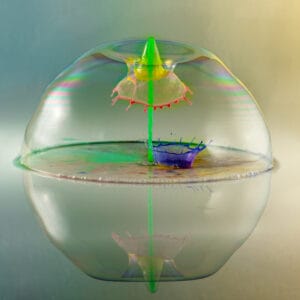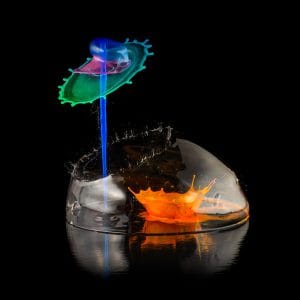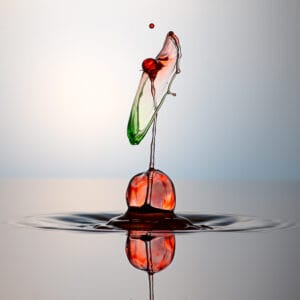Capturing Bubbles

Bubbles are formed in a few different ways.
A bubble is placed on the water surface or on a flat acrylic sheet (or similar). A water drop or jet is able to pass through the bubble and create a collision within or near the bubble. This procedure is sometimes enhanced by making a bubble mix that is a bit more resilient against breaking up with initial contact. I make up a 250ml mix using
170ml of Water
50ml of Dishwashing Liquid
30ml of Glycerin
I have found that even if the bubble bursts there is still the opportunity to capture the bubble bursting.

Another type of bubble photograph involves the creation of a large air bubble at the base of the jet. It is achieved by drops entering the water very close to each other. This creates an air pocket under the surface which then forces a jet of liquid upwards followed by the air bubble which sits at the base of the jet
The 2 close drops are created by making a single drop large enough that it splits into 2 drops just before entering the water. Another way is to use 2 solenoid valves, perfectly aligned, so that one drop follows the other drop.

Another way that bubbles can be created is by forcing an air bubble into the “Shoot From Below” jet of liquid which causes a ballooning of the jet. These types of bubbles can also be formed when creating fountains and extra air is used when blowing the liquid out of the nozzles. (There is more information available within the “Fountain” gallery.